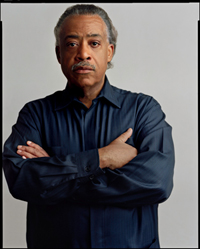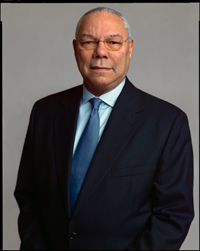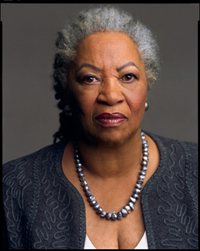Black List
Black List
Nick Mills on HBO’s The Black List
 This Monday, HBO airs the new documentary The Black List. A collaboration between former New York Times film critic Elvis Mitchell and photographer-filmmaker Timothy Greenfield-Sanders (best known for his pictures of wounded Iraq War veterans), The Black List could not be more timely in its interviews of 23 prominent black Americans. At the heart of the documentary is the question that has haunted Barack Obama’s presidential candidacy: What does it mean to be black in America today?
This Monday, HBO airs the new documentary The Black List. A collaboration between former New York Times film critic Elvis Mitchell and photographer-filmmaker Timothy Greenfield-Sanders (best known for his pictures of wounded Iraq War veterans), The Black List could not be more timely in its interviews of 23 prominent black Americans. At the heart of the documentary is the question that has haunted Barack Obama’s presidential candidacy: What does it mean to be black in America today?
In Obama’s case, nothing has been more apparent in recent months than the resentment he has drawn for defying political expectations and racial stereotypes. The Wall Street Journal has turned Obama’s slim waistline and eating habits into an issue by asking if he is “too fit to be president.” Conservative columnist George Will has made Obama’s successful European trip a liability by charging him with being “proudly cosmopolitan.” And the Reverend Jesse Jackson, angry with Obama for insisting that black fathers need to take more responsibility for their children, has declared, “I wanna cut his nuts off.”
Too thin! Too worldly! Insufficiently black! It’s the old heads I win, tails you lose game politicized. For the men and women of The Black List moving beyond the trap of racial expectations is also crucial, and what makes The Black List especially worth watching is the grace in which its 23 subjects assert the diversity of the black experience. None of them assumes that we have moved into a post-racial era in America, but what they do make clear in their interviews is that we have moved into a period in which political correctness has become more counterproductive than ever—to the extent, that focusing on identity politics amounts to isolationism.
 Speaking about the black hip-hop generation, Reverend Al Sharpton observes that its ignorance of black history has come with a terrible price. “We’re not grounding these kids any more,” he argues, and as a result, “manhood becomes thugism or hoodlumism. Or not did you go to college, but did you do your time in jail? Or you’re a real man cause you got shot.”
Speaking about the black hip-hop generation, Reverend Al Sharpton observes that its ignorance of black history has come with a terrible price. “We’re not grounding these kids any more,” he argues, and as a result, “manhood becomes thugism or hoodlumism. Or not did you go to college, but did you do your time in jail? Or you’re a real man cause you got shot.”
Discussing electoral politics, Susan Rice, assistant secretary of state from 1997 to 2001, challenges civil rights leaders who “talk about who’s black enough.” It is “old think,” she insists, “to assume that what’s good for African-Americans is the opposite of what’s good for white folks. Why do we have to have that zero-sum mentality at this point? Why can’t we all get better health care and better education?”
Dealing with the accusation that he was given opportunities because “they needed a black guy,” former secretary of state Colin Powell remarks, “I just smile and say, well, fine; for two hundred years I didn’t get the job because they needed all whites. So I’m not going to argue about that. The only thing that’s going to count now is my performance.”
 What Sharpton, Rice, and Powell have to say in The Black List is not unique in its defiance of expectations. Whether it is guitarist-songwriter Slash discussing his role in Guns n’ Roses or Faye Wattleton, the president of planned parenthood from 1978 to 1992, talking about defying her mother’s wish for her to be a missionary nurse, The Black List is filled with surprises.
What Sharpton, Rice, and Powell have to say in The Black List is not unique in its defiance of expectations. Whether it is guitarist-songwriter Slash discussing his role in Guns n’ Roses or Faye Wattleton, the president of planned parenthood from 1978 to 1992, talking about defying her mother’s wish for her to be a missionary nurse, The Black List is filled with surprises.
Best of all, Mitchell and Greenfield-Sanders in their black-white collaboration allow their subjects to be the stars. As their documentary shows with its title—an ironic reference to the black list of the Joe McCarthy era, when being on a black list meant you were a communist and un-American—there is nothing modest about their intentions. But there is a calculated modesty to the way Mitchell and Greenfield-Sanders have kept themselves out of The Black List in order to give their subjects more space. We hear those interviewed speak, but we never hear the questions Mitchell asked to get them started. As for the filming itself, it is done in classic portrait style with one light and a simple backdrop that keeps the focus on whoever is speaking. We are never made aware that there is an art to what Greenfield-Sanders is doing.
Given the 90-minute limit to The Black List, it is hard to imagine Mitchell and Greenfield-Sanders interviewing more people. Had they done so, their portraits would have been reduced to snapshots. But it is possible to wish Mitchell and Greenfield-Sanders had made some different choices. Conspicuous by their absence are the two greatest living figures from the civil rights movement of the 1960s, Congressman John Lewis (D-Ga.), who from the freedom rides to the 1965 Selma March was everywhere there was danger, and Bob Moses, the driving force behind the Mississippi Freedom Summer of 1964. If the law of averages had prevailed, both would have died long ago as a result of the chances they took. Having them speak now would have given “The Black List” a historical perspective that is not provided by the civil rights leaders it features.
Nicolaus Mills is author of Like a Holy Crusade: Mississippi 1964 and Debating Affirmative Action. Photos courtesy of Timothy Greenfield-Sanders.






